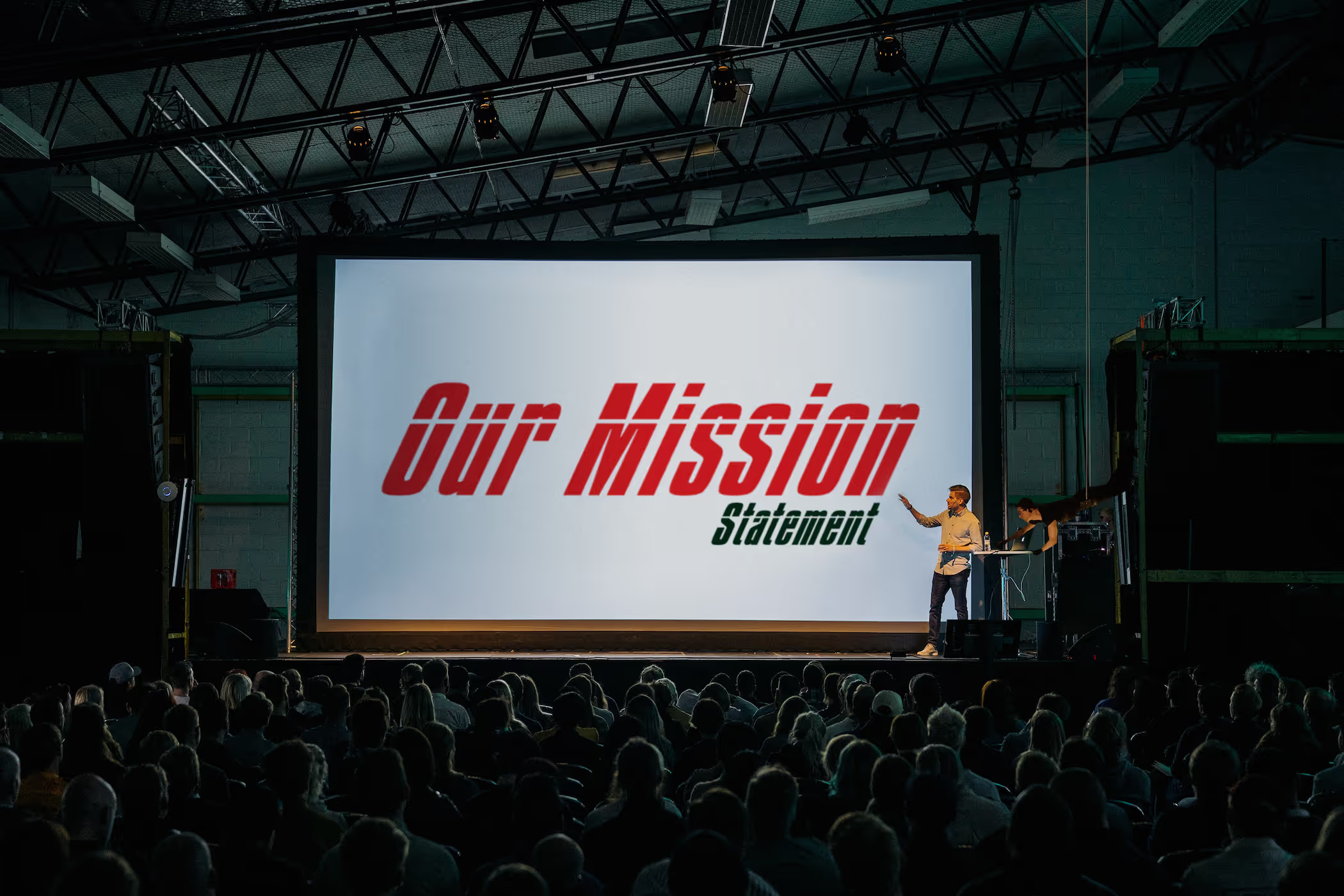
Articles
The Essential Elements of a Strong Mission Statement
September 1, 2022

You started your business with a vision in mind. Now, all that’s left is turning that vision into a reality.
Simple, right? Well, not quite. But you have to start somewhere!
Tailoring a strong mission statement gives you a framework for the future. Your mission statement conveys important values and ideas to your employees, investors, and the general public.
So, what is a mission statement, what should it say, and how can you begin creating your own?
What’s a mission statement?
A mission statement summarizes your company’s purpose and describes your company’s philosophy and values. It’s also a guiding force for decision-making and provides direction for your company leadership.
With that in mind, crafting a strong one involves addressing a few key players and doing some reflection on your values.
Address your customers.
When crafting your mission statement, it’s important to consider your ideal customer profile.
What are you telling your customers about your company? How are you trying to appeal to them? How do your values align with theirs?
Your customers are at the forefront of your business, informing every decision you make. So it only makes sense that your mission statement is focused on their interests. It sets you apart from competitors and can move your targeted consumer to action.
After all, your customers are more than just open wallets. They want to know you’re a company with ethics and values they can get behind. Providing a strong mission statement that addresses customer needs is one way to work toward building lasting client relationships.
Don’t forget about your employees.
Your mission statement sets the tone for the culture at your workplace.
It models expectations for your employees and proposes that certain values are upheld in workplace conduct, peer interaction, and outward messaging. Infusing a sense of mission into your company culture benefits your company in a lot of ways.
People stick with companies they like for longer. Employees who share your values are more likely to stay engaged with your company, which improves employee retention. This also makes it easier to hire people who align with your mission over those who just want a decent paycheck.
.gif)
Regularly communicating or carrying out decisions that are consistent with your mission statement sends a clear message to your employees. Addressing them in your mission statement is an important part of making them feel valued.
Show everyone what you bring to the table.
Your company has something that sets it apart from the others. Now, it’s time to let people know what that is through your mission statement. How are you innovative in your industry? What can you provide that others can’t?
Take Tesla, for example: “Tesla’s mission is to accelerate the world’s transition to sustainable energy.” This tells us that Tesla is innovating with technology and working towards a sustainable future. As a groundbreaking company in the electric vehicle industry, they are indeed accelerating down the road of sustainability.
Explain how you provide a solution to stakeholders with your products and services. Show off your strengths, and celebrate your successes. Most importantly, make yourself stand out.
Describe your goals.
A mission statement informs your direction as a business, so it should also be a reflection of where you want to go.
Are you seeking to expand? Do you want to improve the world in some specific way? Do you want to provide customers with a low-cost alternative?
Describing your goals informs not only your customers but also informs your investors or partners. If you’re looking to scale your business, including your goals in your mission statement can show stakeholders that you’re a dynamic company ready for growth.
It cues everyone in on goals they should be working toward and what a future with your company looks like. If you do it right, your mission statement can also generate excitement and innovation in your workforce.
Showcase an authentic philosophy.
Your business’ values should be at the center of your business playbook. Most businesses make this happen through the use of a mission statement.
What values or beliefs are you committed to? How do your values guide your operations?
.gif)
By infusing your philosophy into your mission statement, you’re telling the public what you stand for. These values should be authentic, though. Don’t just list trendy values and expect everyone to applaud.
Pick values you can act on and that you feel your leadership can uphold in practice. After all, value-based organizations start with value-based leadership.
Offer a glimpse of how you’ll benefit society.
If your business is centered around social responsibility and commitment to community, your mission statement should reflect that. Much like your values, you can show your audience that your company is more than just a business practice.
A particularly good example is Sweetgreen: “Building healthier communities by connecting people to real food.” Their goal is to benefit communities by offering accessible healthy-eating options, and they make this clear in their mission statement and practice.
Your mission statement can be a platform for action. Use it to expand outreach for initiatives you care about.
Do I really need a mission statement?
Yes! Your mission statement is the guiding framework for your company’s purpose. Without a mission statement, your company lacks the direction it needs.
“Who really reads it?” you may ask.
Not every customer is going to take the time to evaluate your “About” section before making a purchase, but some might. Without a mission statement, customers may be confused about your company’s intentions, which can lead to misunderstandings or mistrust.
Do you know who definitely reads your mission statement? Your employees and investors!
Your mission statement sets up work culture expectations for candidates when they apply for a position. Investors interested in scaling your business might not go for it if they don’t know what they’re truly investing in.
A mission statement isn’t just a formality. It’s an integral part of consistent branding and operations. And it’s important to get it right.
I think I’m ready to write a strong mission statement.
Great! Here are some tips to get you started.
First, you’ll want to do some honest reflection and research on your business. Consider what you want your company’s purpose to be on a deeper level than just selling your product or service. What values do you want to represent? How do you want the community to perceive you?
Survey your target audience and employees to see what they think of your practices so far. That should provide you with some great initial insight.
Second, get a range of stakeholders to weigh in. Being a good leader means listening to the advice of those around you. Get department heads, partners, and investors in on the conversation. Your mission statement is important to them, too.
Third, be as authentic as possible. It’s easy to default to a vague and imitative mission statement, but this won’t help you stand out or establish an image built on integrity. Being inconsistent with your mission defeats its very purpose.
Fourth, make it bold, concise, and clear. Your mission statement should be one sentence that clearly defines what your business is about. And avoid fluff — it can distract from the punch of your mission statement.
Add your mission statement to your business playbook.
After your mission statement is written, consider how you can consistently implement it into your business. Ensure your workforce is aware of any changes in your mission statement so they can follow its values.
Try adding your mission statement to your business playbook. It will guide your onboarding processes, daily operations, and important decision-making.
If you’re looking for more ways to flesh out your business playbook, consider building a knowledge base that’s consistent with your mission statement.
Similar Blog Posts










